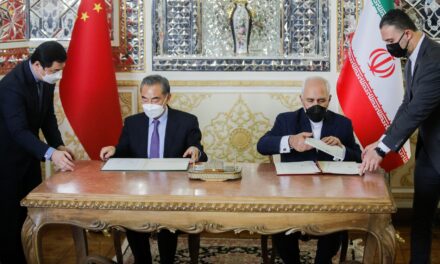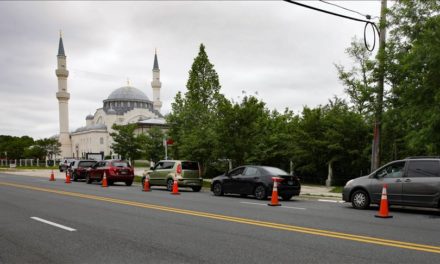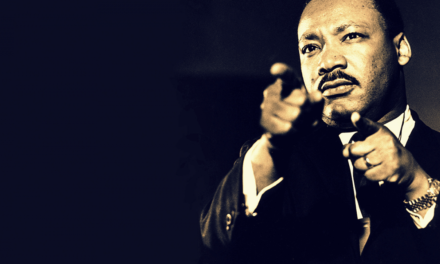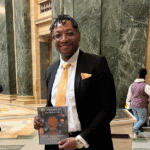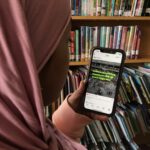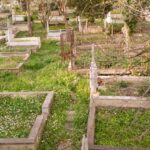Aqilah Allaudeen for U.S. News
Getty Images
The smell of freshly made croquetas lingers in the air. The staff rush to complete orders while keeping cases stocked with hot pastries and desserts like the café’s famous tres leches (milk cakes). Most of the workers are Cuban, and nearly everyone is speaking Spanish.
That was more than a decade ago, but Yasemin Kanar remembers her first day as a part-time fondant cake decorator at Vicky bakery in Miami Gardens like it was yesterday. Kanar, now a popular beauty social media influencer, was still in high school at the time. She walked into the bakery dressed modestly, wearing a hijab.
“It took awhile for people to get used to that, but everyone was really nice to me,” Kanar recalls. “Once we started talking to each other in Spanish, we were on the same page.”
Kanar, now known for her social media channels, was born to a Cuban mother and Turkish father in Miami. Her mother, the daughter of a prominent Cuban émigré family, converted from Catholicism to Islam in her early 20s after a spiritual search. She raised Yasemin, her brother and sister in a household strong in both culture and in faith. Her father influenced her moral outlook, Kanar says, but her personality is more Cuban.
Kanar and her siblings are part of a relatively small but fast-growing segment of the Muslim population in the United States – Latino Muslims. The Pew Research Center says the number of Muslims living in the U.S. increased from 2.5 million to 3.5 million from 2007 to 2017. Roughly a quarter-million of them are Latinos.
In 2009, just 1% of U.S. Muslims identified as Latino, reported the Institute for Social Policy and Understanding, a Washington-based advocacy group that provides research and education about American Muslims. Nine years later that figure had increased to 7%, it said. Researchers estimate that slightly more than half of Latino Muslims are former Catholics.
A growing number of mosques publish literature in Spanish. Organizations like Texas-based Islam in Spanish provide Qurans and videos to those wanting to learn about the religion. In heavily Latino South Florida, Latino Muslims are still finding a foothold. There is no prominent Latino mosque, for instance, but there is plenty of anecdotal evidence that the number of Muslims and the resources available to them are increasing.
“I’ve gotten messages from Latino girls on my social media channels asking me questions about Islam,” Kanar says. “Some of them ask questions about converting or how to tell their families.”

Yasemin Kanar celebrates Eid al-Fitr with a feast of Cuban food at her mother’s home in Miami, on May 24, 2020. Among the dishes is her childhood favorite, arroz imperial, a Cuban chicken and rice dish.(Courtesy of Yasemin Kanar)
Kanar, now 30, is married to an Egyptian Muslim and the mother of two children. She started her YouTube channel more than a decade ago to share how she styled her hijab with close friends and family, but she was soon getting thousands of views on her videos. When she started getting messages from Cuban girls with questions about Islam, Kanar realized she needed to keep her channel as open as possible.
While the marrying of Cuban culture and Islam may seem counterintuitive to some, Kanar maintains that being Muslim doesn’t make her any less Cuban. Juan Gomez, the director of an immigration clinic at Florida International University, agrees.
“You can’t say that someone is more Cuban because they do one thing and you do another,” he says. “It’s about remembering your background and how you were brought up … It’s the food, the language, the music, all of it.”
Kanar grew up surrounded by both Muslim and Cuban influences. Her favorite memories include having dance parties with her girlfriends and digging into her mother’s arroz imperial – a classic Cuban comfort food made with layers of yellow rice, shredded chicken, mayonnaise and melted cheese.
“(My mother) would cook it on days we had a girl party or girl gathering,” she said. “It was my favorite, and such a treat … We would go crazy and have fun as long as there were no guys around.”
Kanar didn’t drink alcohol or wear revealing clothing like some of her Cuban friends, and as she got older, she began to surround herself with friends who shared similar values. While not all of them were Muslim, many lived their lives more conservatively. Kanar moved to the small town of Stuart a few years ago, where there are fewer Cubans. But she says her ability to speak Spanish has kept her connected to her Cuban roots.
“When (Cubans) first see me, they never think that I’m Cuban or that I can speak Spanish and so they look at me like an outsider,” she says. “When they find out that I can speak Spanish, it’s like they can relate to me on a new level and my hijab doesn’t matter anymore. I’m one of them.”
Tony Meyer, the owner of Vicky Bakery, recalled that the language bolstered his relationship with Kanar. “We had an additional connection beyond her just working for me,” he says. “She talked to me in Spanish, and we had that in common.”
Wilfredo Ruiz, the communications director for the Florida chapter of the Council on American-Islamic Relations, is a Latino convert to Islam. He agrees that language kept him connected to the Latino community after he converted to Islam.
Cultures and languages mixed during the centuries of Muslim rule in the Iberian Peninsula. “Language goes back many years, and you will see many similarities between Spanish and Arabic,” Ruiz says. “Perhaps that’s another reason why many Latinos feel the connection to Arabic and Islam.”
Kanar’s mother, Roraima, 66, fled to Miami with her family at the age of 5 after Fidel Castro overthrew Fulgencio Batista’s government in 1959. Her father had served as a general under Batista.
“Many Cubans will recognize my father’s name … I am as Cuban as it gets,” Roraima says. “But when people see me, they see my hijab first and not a Cuban.”
Roraima was brought up in a Catholic household and was proud of her faith as a child, but after she started asking questions in high school and college, she fell in love with Islam.
“I even wanted to be a nun at one point in time,” she says. “Faith has always played an important role in my life. It’s just that now, I believe in Islam because it had the answers that I was looking for.”
Roraima is in the 56% of Latino Muslims who converted from Catholicism. The rest generally convert from Protestant faiths or secular or atheist lives, says a 2017 report on Latino Muslims in the United States published in the Journal of Race, Ethnicity and Religion.
Families may frown at a member leaving the faith they were born into, and Roraima’s mother was no different. But Roraima says she made clear that she wasn’t forgetting her upbringing and culture.
“In Cuban culture, women definitely enjoy being celebrated by men,” she says. “When I stopped caring about that and converted to Islam, my self-esteem went up … I am Cuban, and my religion is Islam. To me, they are very different things.”
She passed those values to her daughter. Kanar says she thinks that she is able to relate well to both Muslims and Cubans because of her heritage and faith.
“As a convert, my mother instilled a lot of confidence and love for Islam in us,” Kanar says. “It made me feel confident in my own body, and I want to share that with others.”


